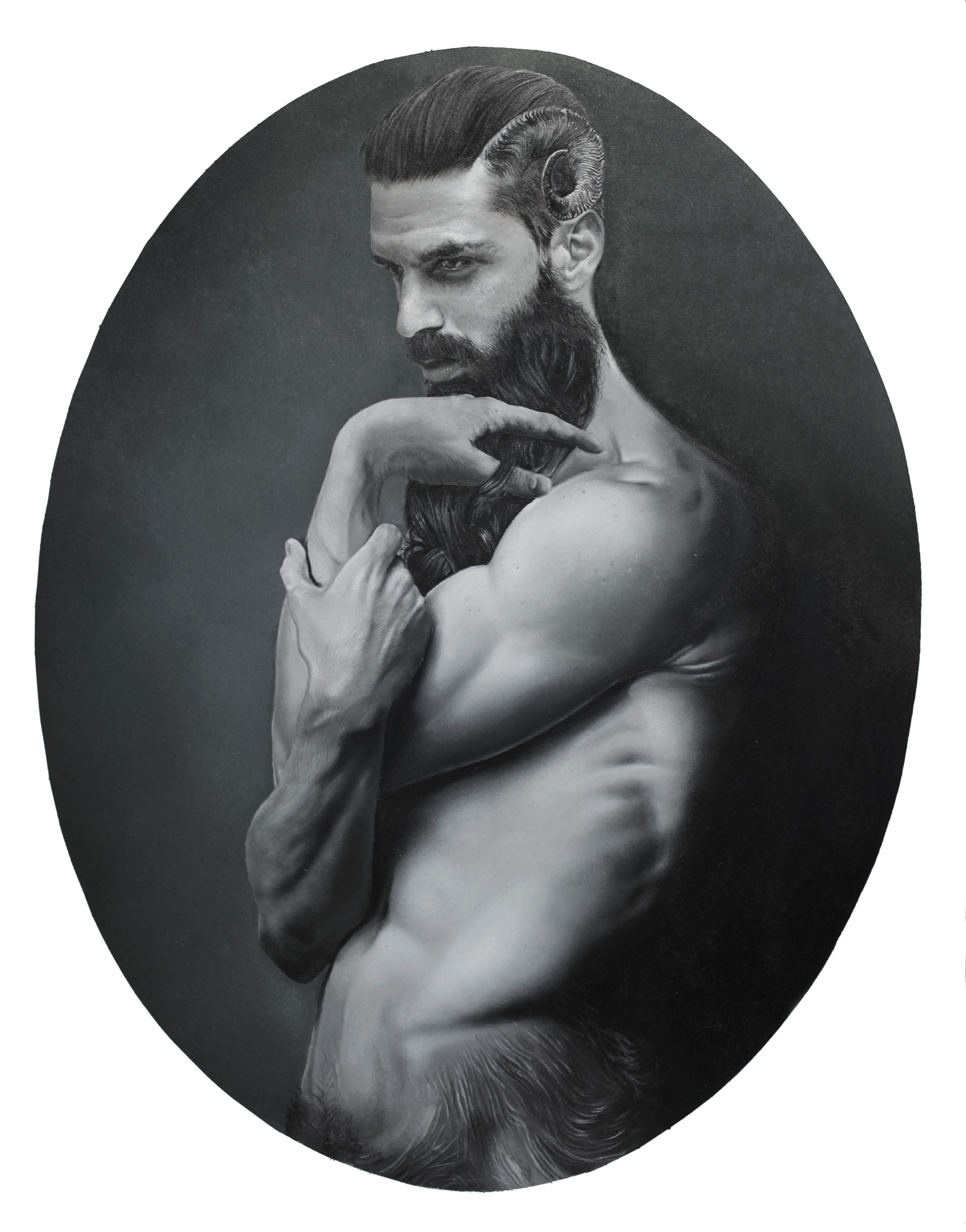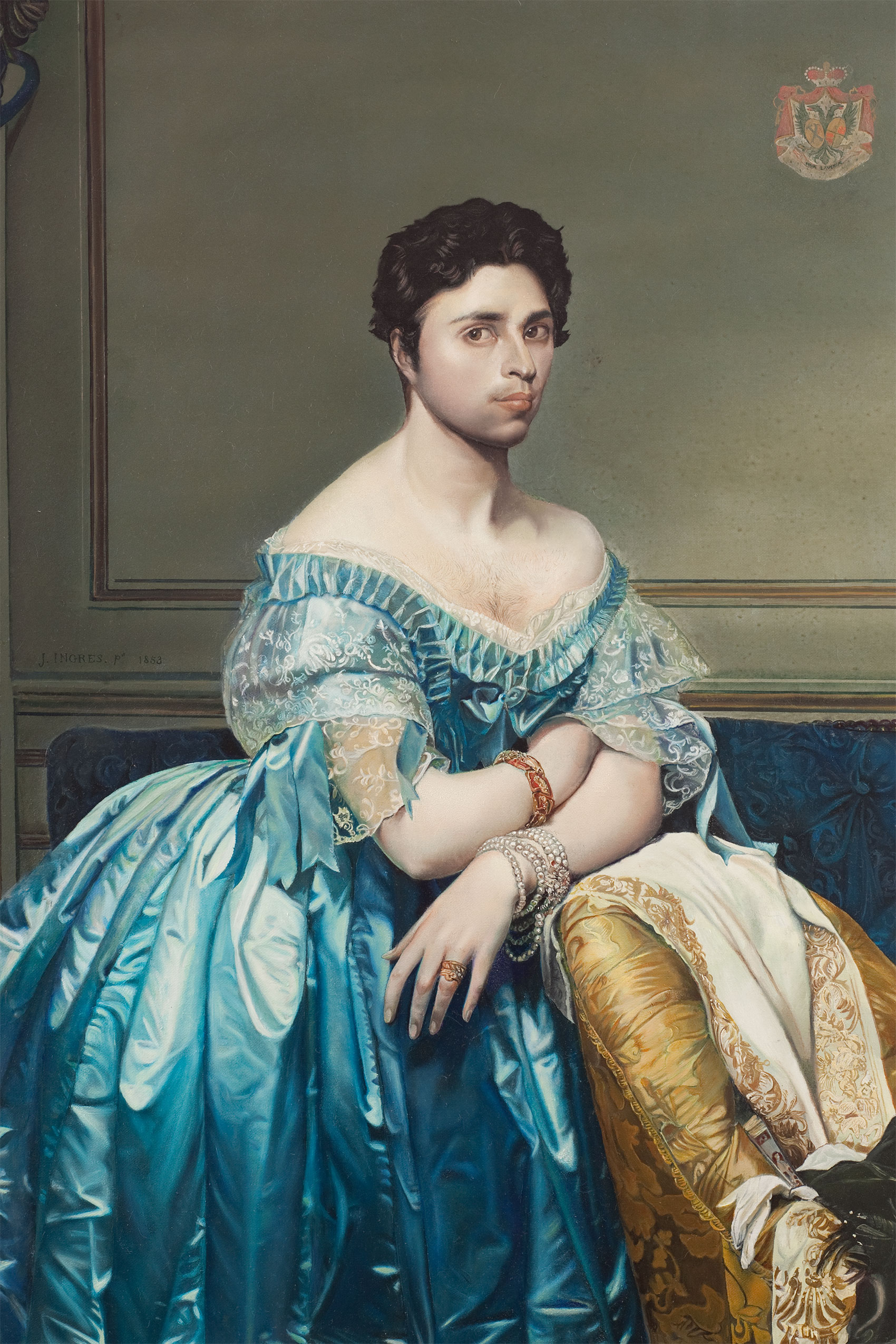The Invisible Paint – Taner Ceylan
He completely convinces us of his own reality; making us feel his chaos, freedom, pain… He takes us out of this world with colors, textures; locks a new emotion on his canvases with every little brushstroke. Taner Ceylan presents us the poetics of art, perhaps in a way we have never experienced before…
You say that “The spectator must not see the paint” for the works you create in a masterful technique. How did the process of developing your technique evolve?
I didn’t start off directly by saying let me make paintings with the hyperrealist technique to begin with of course. I’ve been doing realist paintings ever since I’ve known myself; even as a kid what I did wasn’t kids paintings. Certain manners were imposed after the academy, and I had relatively moved away from the manner. I was painting and researching. I adopted realism once more for it was a technique that I thought was close to me, and appropriate for the conceptual basis of my works. Maybe you know, I describe my technique as emotional realism because I don’t merely paint what I see in the photograph; I definitely change it with an emotion and go through an emotional process with the painting in the creative process. Thus, when I say the spectator must not see the paint, what I mean is that what matters is that the painting has an emotion, that in fact, the painting is a living being and it should be approached with this awareness. The important thing for me is to make the blood visible rather than the red paint…

Taner Ceylan, Satyr II, 2015, oil on canvas, 84 x 107 cm
What do you pay attention to in order to capture this attitude?
The emotional dynamic is very important for me. As humans, we are creatures made up of emotions. We are nothing without emotions; we wouldn’t be any different than machines.
It requires devotion and a serious discipline before anything else. The painting trained me; I am quite a dispersed man, but if you want a painting like this, you need to have a certain order. On the other hand, I spend approximately 8 hours a day in front of a painting. There is maybe 20 cm between the canvas and I. We are that close and together. Whatever I am experiencing in daily life, whichever emotion I go through is evident in the painting I create. Although I decide on the concept, composition, and the paint beforehand, I am alone with the canvas during the creative process, which lasts for months. To capture the attitude you’ve mentioned, I don’t do anything other than forming a relationship while creating a painting in front of the canvas.
We can detect your close relationship with art history through the references in your works. Where does the past and history stand in your creative process?
I have always seen history as an interesting course and an infinite world. Besides having spent hours in museums with paintings claimed by art history, I have also always enjoyed reading texts on them and making my own analysis of them. The past is ours; it’s the humanity’s past. What we call history is the grounds that make today. Our characters today are shaped through what has happened in the past. And what’s most important is that painting is learned in a museum. Thus history and art history has always been in my art. Not only in a conceptual way, but in a technical and emotional way at times…
How much do you feed from the Turkish culture and history while creating your art?
I definitely feed from it. Whether I want to or not… I was born and raised in Germany, but I am from Turkey all in all. There is no such concept as a pure Turk; all our grandfathers came from different places and together formed Turkey here. I think this is a very valuable thing. This is the part of history, of Turkish history that I am interested in. Living in it and experiencing it is the main indication of getting fed by it. It bears a valuable and broad art history from the Ottoman’s to modern day, filled with treasures. I aimed to show this side in my Lost Paintings series.

Taner Ceylan, Ingres, 2015, Oil on Canvas, 121×191.1 cm
Your last series “We Now Must Say Goodbye” and “I Love You” was shown in London and New York. How do the reactions change in Turkey and abroad on the nature of the content of your works?
Both of my shows received really good feedback in Turkey. I formed the “I Love You” series thinking about the history and contemporary art history of London specifically. It was obviously great for the Turks to come to the show, visit it, express their praises, and have the Turkish media and art scene’s admiration. We received similar feedback from outside of Turkey as well. The audience of New York now knows me. We completed our 4th year with Paul Kasmin. The American art scene is more familiar with my work. But for example, there was a crowd at the show in London’s S2 that saw my works for the first time. The content of the exhibition was surprising and unexpected even for the Sotheby’s S2 Gallery. But the applause and appreciation from the audience also surprised them, to tell you the truth.
On the other hand, my works have never been works that are easy to grasp and digest. First, my goal is to place myself in different worlds and live new experiences. Merely the difference between outside of Turkey, America or Europe, from here is freedom of speech, and that the institutions don’t auto-censor themselves…
Can you say that you’re in a period of your life where you lean more towards darker themes?
Who isn’t in that period! I am trying to pull through smoothly in this painful and complicated period our country is in by focusing on my painting. I think that it’s important to never give up on the power of creating, and observe everything to become aware that nothing other than creating and working will help. I think this is the best way of resistance. But as I said, whatever is going on in my daily life is surely reflected in my art, my work. The pain and sorrow the world is under is all around… We’re learning to say goodbye to things during these times, at the end of one era and the beginning of a new one, even if it’s painful. I am always hopeful that we will be welcoming good things too. On the other hand, in order to keep my good emotions alive in this process, I continue my “Golden Age” series, which helps me to dream and daydream. A depiction of a utopian world…
Looking back at your works from day one, do you think you’ve reached the point where you wanted to evolve to?
The main attraction and reason for why I paint is the excitement it brings; to create or stumble upon a new world each time…
I guess the biggest threat would be to lose this excitement, become mundane and fall into repetition. It’s enough of a reason to not go down to this numbness. Otherwise, what I’ll do tomorrow is uncertain, or where I will evolve to. I guess this is the exciting part of it all. The only place I would like to reach is to feel the emotion I get before starting a painting every time, over again. Because life right now is working really hard to not reach that place.
Photography: EMEL ERNALBANT